It’s time to talk about sustainable WordPress development
If the internet was a country, it would be the world’s 7th biggest polluter. This is a staggering statistic that should not be ignored. Taking a sustainable approach that aims to put the planet first is key to tackling this problem. In practise, that means greener web development through technical improvements and strategic decision making.
To put things in perspective, in January 2021 there were almost 5 billion active internet users worldwide, which is 59.5% of the global population, and 92.6% of these people (4.32 billion) accessed the internet via mobile devices.
Looking a little further back to 2015, world leaders agreed to 17 Global Goals, known as the Sustainable Development Goals. These goals have the power to create a better world by 2030, by ending poverty, fighting inequality and addressing the urgency of climate change.
Increasing internet usage without environmental improvements would potentially make these even more challenging to achieve, but greener web development is a step in the right direction.
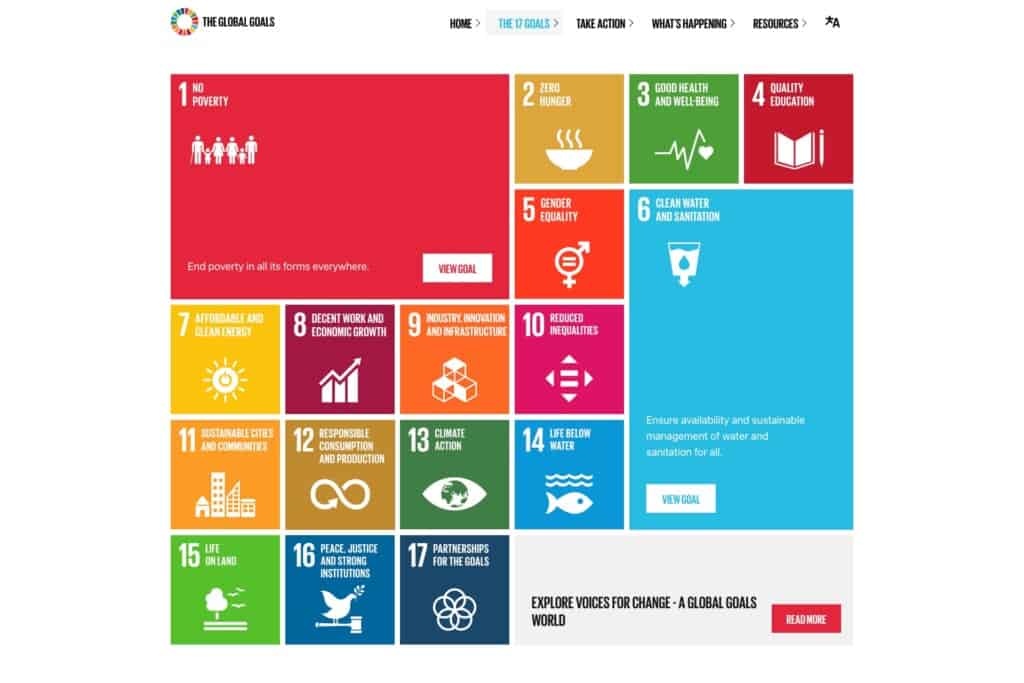
Guided by the goals, it is now up to all of us; governments, businesses, and the general public to work together to build a better future for everyone. The good news is that we don’t have to try to solve these problems alone.
Climate Positive Workforce
Ecologi, a platform for true climate action, facilitates the funding of gold standard climate projects and tree planting around the world. Their mission is to reduce 50% of global CO2 emissions by 2040 and responsibly plant billions of trees every year.
Atomic Smash is a Climate Positive Workforce with Ecologi and we were even named an Ecologi Business Hero. For our recent 11th birthday, we planted 11 trees via Ecologi for each client and friend of the agency who wanted to join in our celebrations. View our forest here.

Ecologi’s project supports the UN’s ‘life on land’ development goal of action towards a more sustainable future, and they aren’t alone.
This is just one example of the many organisations that we can tap into as businesses or individuals to contribute in any way we can, big or little, to move us closer to achieving the world’s Sustainable Development Goals.
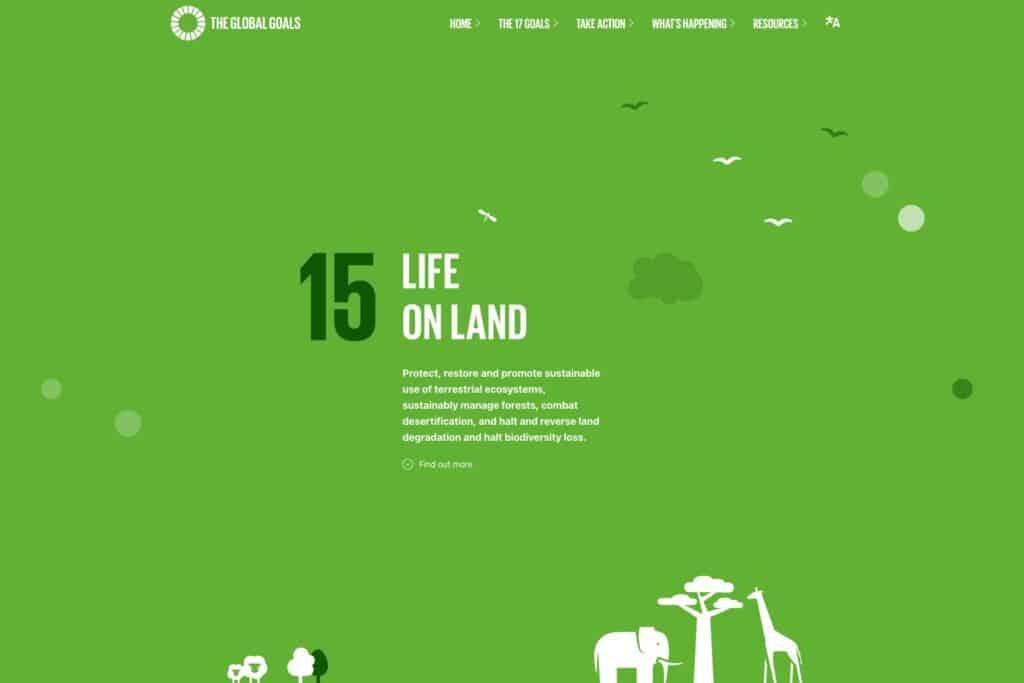
Why greener web development matters
The world wide web accounts for 3.7% of all greenhouse gas emissions. It’s easy to think of the internet as a concept, invisible and intangible, but the content we consume all day (and night) is collected, processed, stored, and exchanged in data centres around the world. The supercomputers that run our data 24/7 often overheat, with few of them running on green energy.
The more complex a website is, the more energy it requires to load – and the greater its climate impact. According to HTTPArchive, the average web page today is nearly 4x the size that it was in 2010. This is continuing to rise, making greener web development all the worthy of our attention.
The average website produces 1.76g of CO2 for every page view; so a site with 100,000 page views per month emits 2,112kg of CO2 every year.
Planting trees is just one way to contribute to sustainability. At Atomic Smash, we provide clients with greener websites by building them to be lean, fast loading, and built on servers that are powered by renewable energy.
We’ve also started to track the carbon footprint of the websites we develop to review how well we’re optimising them. One way to achieve greener web development is by making sites faster, and there are plenty of ways that you can reduce the carbon footprint of your website too.
8 ways to make your website greener
-
Speed it up
-
Optimise images
-
Utilise CDNs
-
Set up caching
-
Use a green hosting provider
-
Spring clean your platform
-
Improve site navigation
-
Check your carbon footprint
Speed it up
There are many things you can do to improve the loading time of your website, such as compressing large files, reducing unnecessary redirects because these can slow down page load times, and improving server response time by choosing a fast and reliable host.
Ask us who we recommend
Want to power your website using renewable energy? Ask us who we recommend you host it with.
Need inspiration? Web developers at Government Digital Service (GDS) created an action plan to increase the speed and performance of their platform, with specific technical goals that would help users interact with web pages sooner.
Optimise images
High resolution images look beautiful on your website, but they’re also one of the biggest drains when it comes to energy consumption. The goal of image optimisation is to create high-quality images with the lowest file size.
To fix large image files, you can compress them which improves loading time, decreases file size and therefore saves data.
Large images slow down site speed, drive people away and kill the planet – but you can use handy platforms like TinyPNG and WP Smush Pro to compress them without compromising on quality.
Utilise CDNs
If you like using media rich content on your website, ask your web developer about CDNs (content delivery networks), which are designed to make online experiences faster and more reliable.
The goal of a CDN is to reduce that frustrating delay that happens when trying to access a web page with rich media content such as videos before it fully loads.
Set up caching
Website caches store copies of digital files to deliver them more quickly when loaded by a user.
When the user revisits the page, the data is automatically retrieved from the cache location rather than querying the webserver again.
Use a green hosting provider
Green web hosting is a fairly new but important topic. Hosting with a provider with eco-friendly initiatives such as using renewable energy to power your website helps you lessen its environmental impact.
At Atomic Smash, we host most of our websites with Kinsta; a green hosting provider, meaning these websites run on 100% renewable energy.
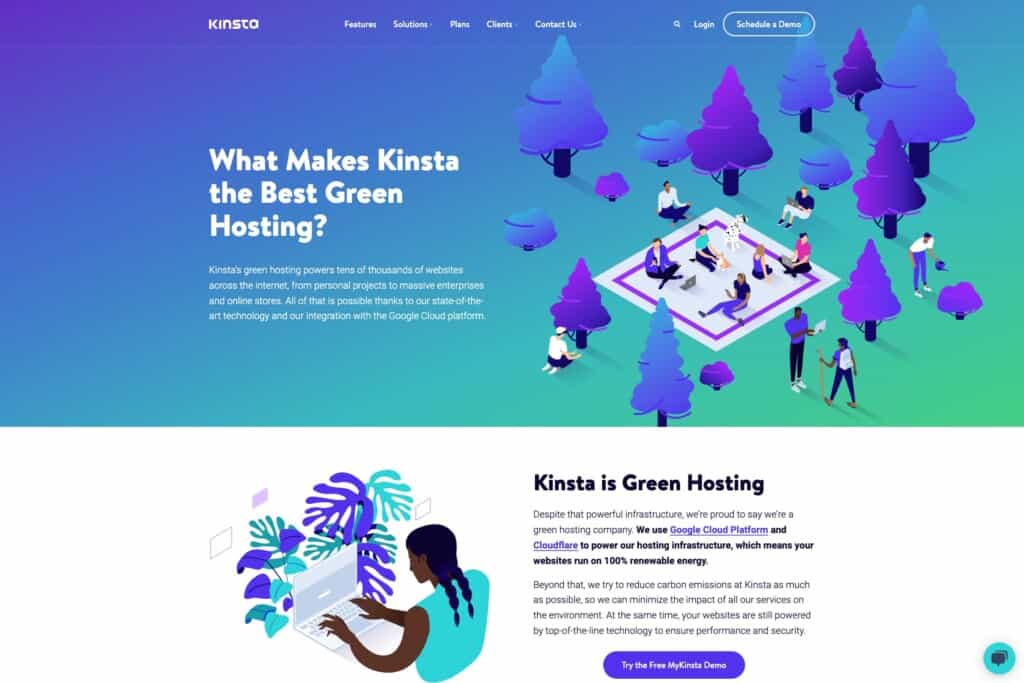
By partnering with companies that seek to minimise carbon footprint, we can reduce the impact that websites we build have on the environment.
Spring clean your platform
Frequently delete anything you’re not using such as unwanted themes, plugins, archived posts, unused media, unused categories, tags and comments. The more you streamline your website, the less energy it consumes.
Improve site navigation
To make it easy for your users to source information, review your website navigation to ensure that your visitors are getting the best experience. The fewer time people spend clicking around your site, the faster they find what they require. (Tip: this is also much better for UX and conversions.)
Check your carbon footprint
You now have the ability to check how your website is impacting the planet using a variety of tools, but our favourite was developed by digital sustainability pioneers, Wholegrain Digital.
Wholegrain Digital is an agency that inspires and educates people to create a zero carbon internet. They launched websitecarbon.com in 2018, a digital platform that tests website homepages to calculate the CO2 per page view and energy consumptions.
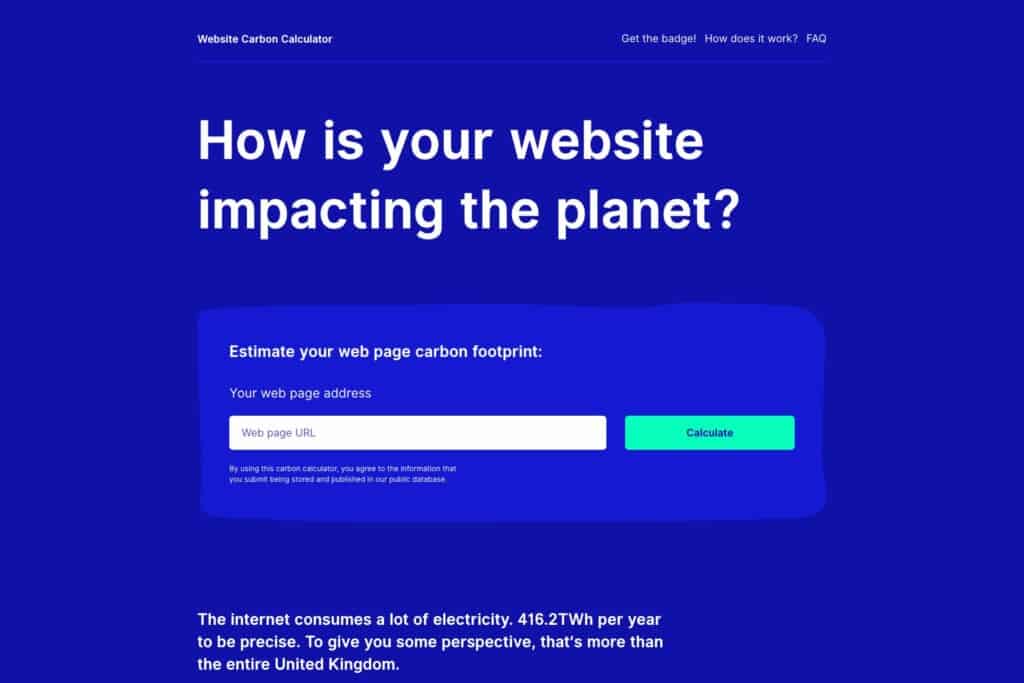
To check your web carbon footprint, simply enter your website URL into the search bar and await the results!
What we’re doing at Atomic Smash
Greener web development is just one part of what we’re doing at Atomic Smash. We are seeking sustainability wherever possible and making ongoing climate-smart choices to minimise our impact.
In 2022, we launched a Sustainability Working Group to drive forward new environmental initiatives on top of good practices we’d already been following. Those included:
- Our central office space uses 100% renewable electricity and the majority of our team members use renewable energy when working from home too.
- We encourage sustainable modes of transport and most of us cycle or use public transport to come to the office.
- We choose eco-friendlier stock for printed marketing collateral, such as biodegradable stickers!
Clients with shared values
We work closely with environmentally-minded clients including B Corps; Sawday’s and Pikt.
Who else is working on it?
Organisations all over the world have sustainability action plans and net-zero carbon goals.
Even the likes of Amazon, which refused to release its carbon footprint data until 2019 (and disclosed a 15% increase in carbon footprint the very next year) has shared its goal to reach net-zero carbon by 2040. Crucially, creating plans, pledges and goals is a good start but action is essential.
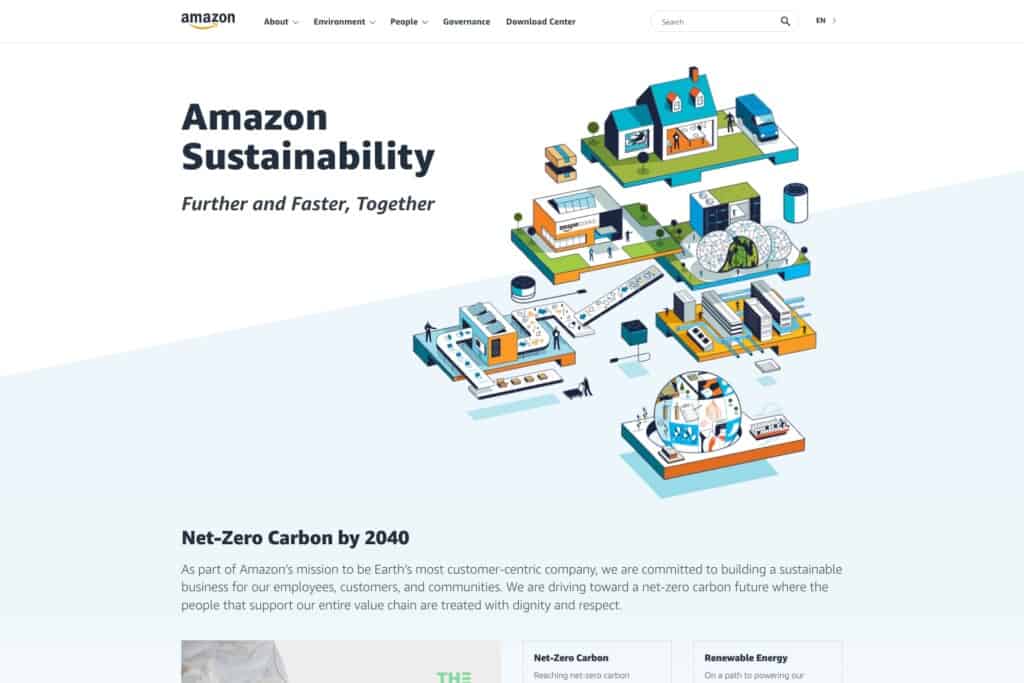
Takeaways
Keep green tech in mind
- The internet has a very real environmental impact
- Explore ways to reduce your carbon footprint
- Take action to make your website greener
- Regularly optimise your digital platforms
- Make use of clean, green energy sources
- Support projects that minimise CO2 emissions
Atomic Smash is your digital partner. We live by the idea that a website should never be finished. Instead, it must keep evolving, developing and responding to changing needs.
Greener web development
To find out how we can support the green development and growth of your digital platform, get in touch.
Hungry for more blog posts?